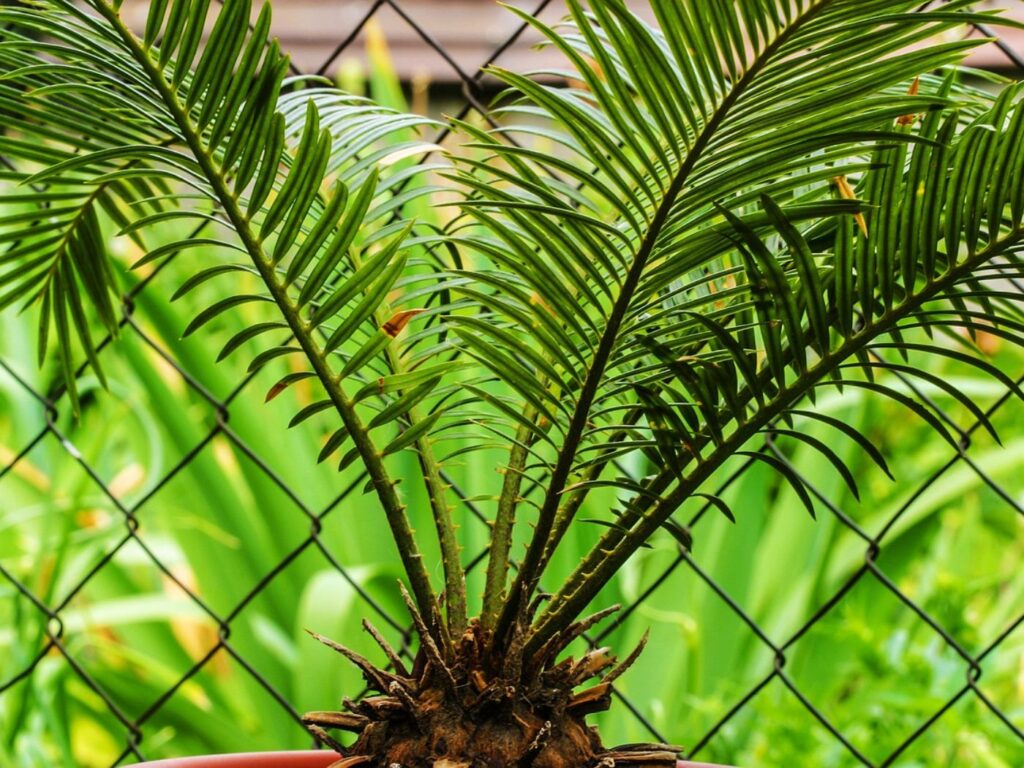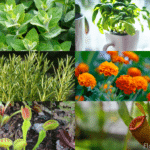Noticing your sago palm’s leaves turning yellow can be disheartening. This tropical beauty, often a centerpiece in gardens and living rooms alike, signals distress through its fronds. But don’t worry, you’re not alone in this.
Many plant enthusiasts face this challenge, puzzled by the sudden change in their plant’s appearance. Understanding the root cause is the first step toward reviving its lush, green vibrancy.
Yellowing leaves often indicate underlying issues ranging from nutritional deficiencies to improper watering habits. Fortunately, with the right knowledge and care, you can pinpoint the problem and take corrective action.
This article will guide you through the common reasons behind your sago palm’s yellowing leaves and provide practical solutions to restore its health. Let’s dive into transforming your concern into confidence by nurturing your sago palm back to its full glory.
Understanding Sago Palm Yellowing

Common Causes of Yellowing Leaves
Surprisingly, the vibrant green leaves of your sago palm turning yellow can signal several issues. Over-watering and under-watering top this list. If sago palms sit in waterlogged soil, their roots can’t breathe, leading to yellow leaves.
Similarly, too little water results in stressed plants with the same yellow warning signs. Next, nutritional deficiencies, particularly a lack of essential minerals like nitrogen, potassium, and magnesium, can rob your palm of its green glory.
Lastly, pests and diseases aren’t to be overlooked. Spider mites and fungal infections, for example, can cause yellow spots or an overall yellowing effect that degrades your plant’s health.
The Lifecycle of Sago Palm Leaves
Understanding the lifecycle of sago palm leaves helps in maintaining realistic expectations. Each leaf on a sago palm experiences a journey from birth to eventual decline, which naturally includes turning yellow and browning as they age.
Typically, lower, older leaves will show signs of yellowing first as the plant redirects nutrients to newer growth. This process is a normal aspect of the sago palm’s lifecycle. However, if you notice younger leaves or a significant number of leaves turning yellow, it’s time to investigate further.
Environmental Factors Affecting Sago Palms
Sunlight and Shade Requirements
Sago palms need a delicate balance when it comes to sunshine. Too much direct sunlight can scorch leaves, turning them yellow, while insufficient light may cause pale leaves that also lean toward yellow. Aim for a location where your sago palm can bask in bright, indirect light for the best results. Think of it like a sunbather who loves the warmth but knows when to seek shade.
Proper Watering Techniques
The fine line between hydration and drowning holds the key to your sago palm’s health. These plants dislike wet feet, so over-watering is a no-go. On the flip side, allowing the soil to become a desert isn’t ideal either. Water only when the top inch of soil feels dry to the touch. Imagine giving your sago palm a drink only when it’s thirsty, not on a fixed schedule regardless of need.
Nutritional Deficiencies and Soil Quality
The Role of Fertilizers in Plant Health
Fertilizers play a critical part in the health of your sago palm, providing essential nutrients that may well not be naturally abundant in your soil. A balanced fertilizer, especially one rich in nitrogen, potassium, and magnesium, can prevent yellowing of leaves by compensating for the nutrients the soil lacks.
Remember, it’s about finding the right balance; too much fertilizer can harm your plant just as much as too little. Regularly check your sago palm’s growth and leaf color to gauge if your fertilization routine needs adjustment.
Recognizing Nutrient Deficient Soil
Identifying nutrient-deficient soil is key to preventing your sago palm’s leaves from turning yellow. Soil that lacks essential nutrients often leads to pale leaves and stunted growth. An easy way to check if your soil is nutrient-deficient is by observing the color and texture of the sago palm leaves.
If they are turning yellow, especially the younger leaves, it’s a clear indicator that your soil may well need a boost. Conducting a soil test can give you a detailed insight into what your soil is missing, allowing you to customize a nutrition plan tailored specifically to your sago palm’s needs.
Diseases and Pests That Cause Yellowing
When you notice your sago palm’s leaves turning yellow, it’s a signal to examine more than just your watering habits. Diseases and pests can cause significant stress to your plant, leading to that unwanted yellow hue. Let’s dive into identifying these culprits and the symptoms to look out for.
Identifying Common Sago Palm Pests
Among the tiny invaders, scale insects and spider mites stand out as the most notorious pests attacking sago palms. Scale insects resemble small, brown, bumpy spots on leaves and stems, frequently grouped together. They suck the sap out of the leaves, causing them to turn yellow and, eventually, brown.
Conversely, spider mites are hard to spot without a magnifying glass but betrays their presence through fine, web-like structures on the undersides of leaves. These pests also drain the life from sago palm leaves, leading to yellowing and potentially the death of the plant if not addressed.
Symptoms of Diseases in Sago Palms
Fungal diseases, particularly Ganoderma and Fusarium wilt, pose a significant threat to sago palms. These diseases manifest through discolored leaves, starting with yellowing at the tips or edges before advancing to the rest of the leaf.
Ganoderma, a root rot fungus, may well also cause the base of the trunk to develop a soft, spongy texture. Fusarium wilt, meanwhile, can make leaves appear wilted or distorted beyond the yellow discoloration. Drooping or falling over despite adequate water and care is a tell-tale sign that a disease has taken hold.
In both cases, the sooner you identify these pests and diseases, the better chances you have to revive your sago palm. Prompt action, correct diagnosis, and effective treatment can turn things around for your plant. Remember, a healthy sago palm not only looks great but also strengthens your garden’s overall ecosystem.
Care and Maintenance Tips
Pruning and Removing Yellow Leaves
Trimming yellow or brown foliage from your sago palm improves not only its appearance but also its health. Focus on leaves that are completely yellowed or significantly browned. Use clean, sharp shears for this task to avoid damaging the healthy parts of the plant.
Make the cut at the base of the leaf, close to the trunk. This action prevents further stress on the sago palm, allowing it to redirect its energy to the growth of healthy leaves. Remember, less is more; over-pruning can harm your plant.
Best Practices for Sago Palm Care
Achieving vibrant health for your sago palm involves several crucial steps. Firstly, ensure your palm gets adequate, but not excessive, water. The soil should be moist, not waterlogged. Over-watering can lead to root rot, while under-watering causes the leaves to yellow and stiffen. Striking the right balance is key.
Secondly, sago palms require well-draining soil and regular fertilization to thrive. Utilize a balanced, slow-release fertilizer every few months to nourish your plant. Pay close attention to the specific needs of your sago palm, adjusting care routines as necessary.
Lastly, position your sago palm in a spot where it can enjoy bright, indirect light. Too much direct sunlight can scorch the leaves, while too little light can weaken the plant. If your sago palm is indoors, rotate it occasionally to ensure all sides receive equal light exposure. These simple yet effective practices herald a lush, healthy sago palm.
Frequently Asked Questions
Why are my sago palm leaves turning yellow?
Yellowing of sago palm leaves can be attributed to several factors including improper watering, pests, diseases, nutritional deficiencies, or poor soil quality. Proper diagnosis is key to addressing the issue effectively.
How often should I water my sago palm?
Sago palms should be watered deeply but infrequently. Allow the top soil to dry out between waterings to prevent root rot. Over-watering and under-watering can both cause yellowing leaves.
What type of fertilizer is best for sago palms?
A balanced, slow-release fertilizer is ideal for sago palms. Look for a fertilizer that includes nitrogen, phosphorus, and potassium (often listed as NPK on the packaging) to support healthy growth and green leaves.
How do I prune yellow leaves from a sago palm?
Prune yellow leaves using clean, sharp shears to avoid infecting the plant. Only remove leaves that are more than 50% yellow or brown and avoid over-pruning, as this can stress the plant.
Can pests cause yellow leaves on sago palms?
Yes, pests such as scale insects and spider mites can cause yellowing leaves by sucking the sap from the leaves, stressing the plant. Regular inspections and appropriate treatments can manage pest issues.
Is too much sunlight a problem for sago palms?
While sago palms require sunlight to thrive, too much direct sunlight can scorch the leaves, causing them to turn yellow. Provide balanced light exposure by positioning the plant in a spot that receives indirect or filtered sunlight.
How important is soil quality for sago palms?
Soil quality is very important for sago palms. They require well-draining soil to prevent root rot and maintain health. Incorporate sand or perlite to improve drainage if necessary.
What maintenance tips can keep my sago palm healthy?
To keep your sago palm healthy, ensure proper watering, utilize well-draining soil, fertilize regularly with a balanced fertilizer, prune yellow leaves with clean shears, and manage its light exposure. Avoid over-pruning and over-watering to prevent stress and disease.
Up next: Corn Plant Leaves Turning Brown and Yellow: Causes & Fixes
Image by steveheap/depositphotos







